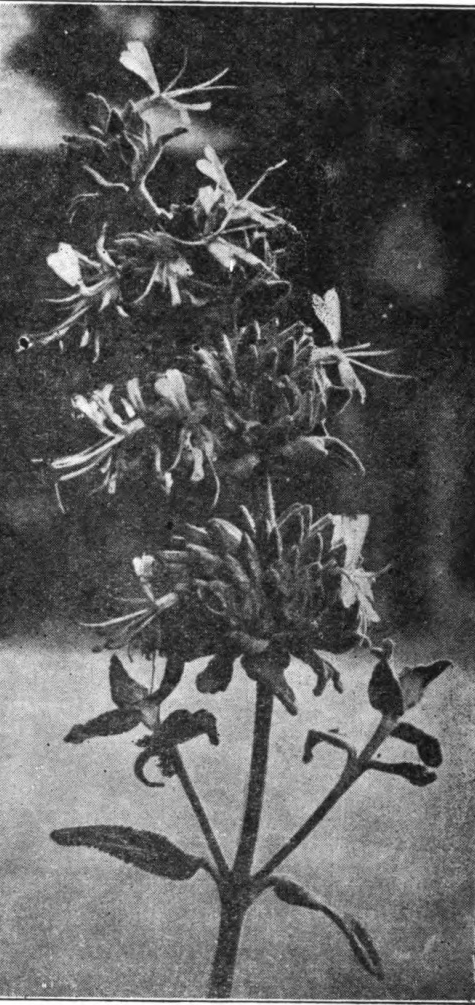June in southern Arizona and adjacent California, and produces tons of delicious, light-colored honey with a good flavor. It is the only cactus to produce a table grade honey in commercial quantities according to N. N. Dodge (A.B.J. June, 1944).
SEA-GRAPE (Coccoloba uvifera). Woody shrubs with round, leathery leaves, long spikes of pale whitish flowers and clusters of grapelike fruits. Sea-grape is common along the coast of southern Florida where it yields small surpluses of amber honey with a good flavor.
SERVICEBERRY, SHADBUSH, SASKATOON (Amelanchier spp.). Shrubs or small trees with long racemes of white flowers and juicy edible fruits resembling tiny apples. Serviceberry is found in eastern United States and Canada blooming in early spring. It is chiefly valuable for stimulating brood rearing.
SILVER BELL, BELL TREE (Halesia Carolina). Trees up to 100 feet tall with numerous bell-shaped nodding white flowers. Silver Bell blooms in spring with the leaves and in the Great Smoky Mountains of Tennessee it is so common that it is considered valuable for spring build-up.
SNOWBERRY, BUCKBRUSH, WOLFBERRY (Symphoricarpos spp.). Low shrubs with opposite leaves, small white flowers, and clusters of white berries. They occur over southern Canada and northern United States and bloom in late summer or fall. Snowberry produces a small surplus of light-colored, well-flavored honey in the Rocky Mountain region.
SNOWBUSH, STICKY LAUREL, MOUNTAIN BALM(Ceanothus velutinus). An evergreen shrub 3 to 6 feet tall, much branched and with large flower clusters in the axils of last year’s leaves. It occurs from British Columbia and South Dakota south to Utah and California, in open woods and on mountain slopes. It blooms from July 1 to 15. According to C. Wenner it produces about 30 pounds of light-amber honey with a heavy body and a sharp to bitter flavor. It fails when the bloom is damaged by freezes. (See NEW JERSEY TEA.)

Black Sage.—Photo by E. R. Root
S N O W-ON-THE-MONTAIN (Euphorbia marginata). An herb 2 to 3 feet tall with the upper leaves white or with white margins, making a conspicuous background for the small flowers. Large, conspicuous nectaries occur on edges of the flowers. Snow-on-the-mountain* grows from Minnesota south to Texas and is particularly common in that state where it produces an amber honey with a rank, peppery taste in the summer. According to Howard Weaver, the honey will burn your throat for an hour after eating it.
SNOWVINE, CLIMBING BONESET (Mikania scandens). An herbaceous, twining vine, 5 to 15 feet long with opposite, heart-shaped leaves, and